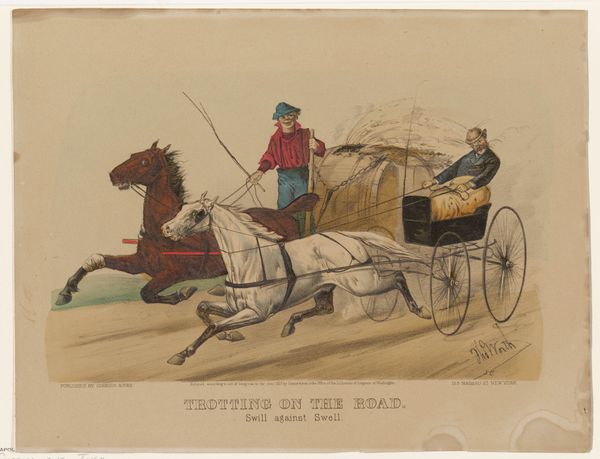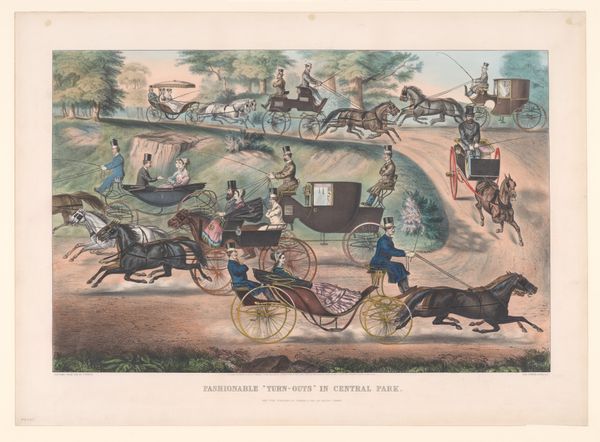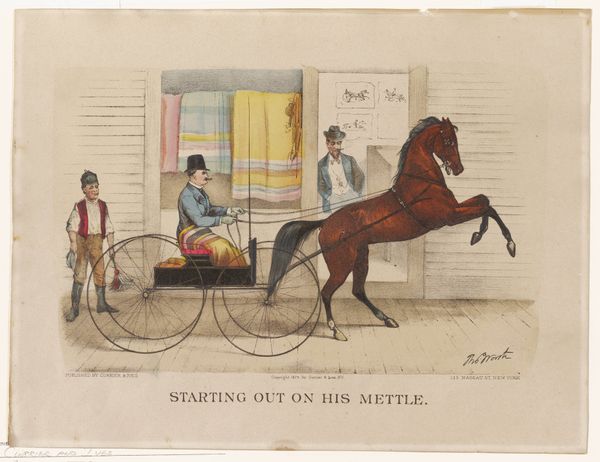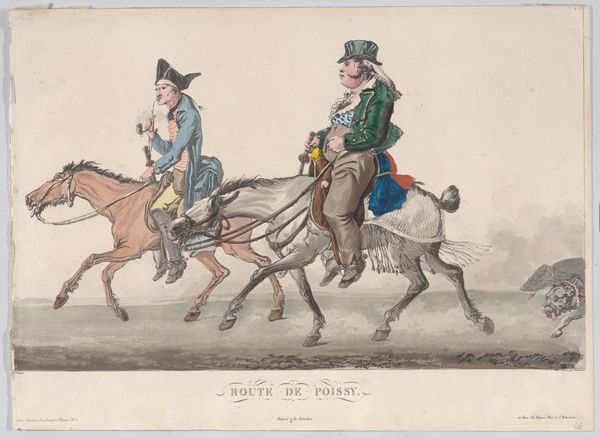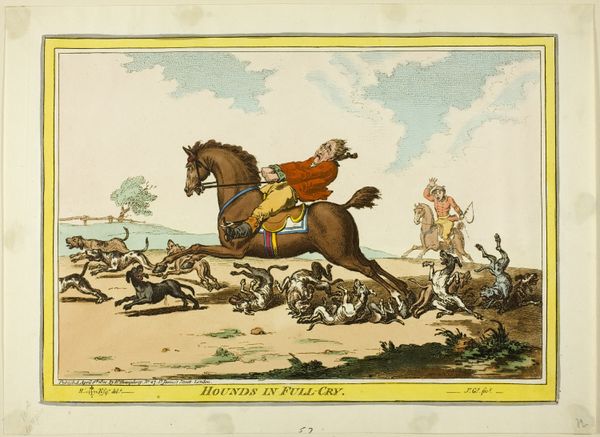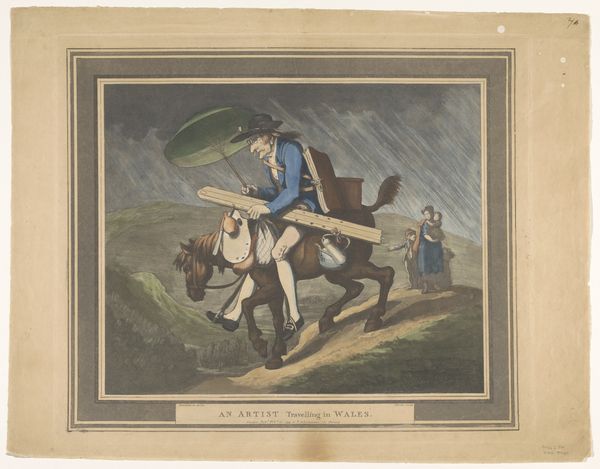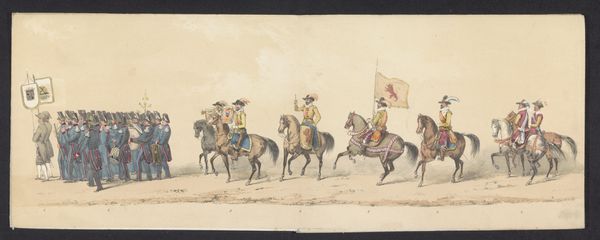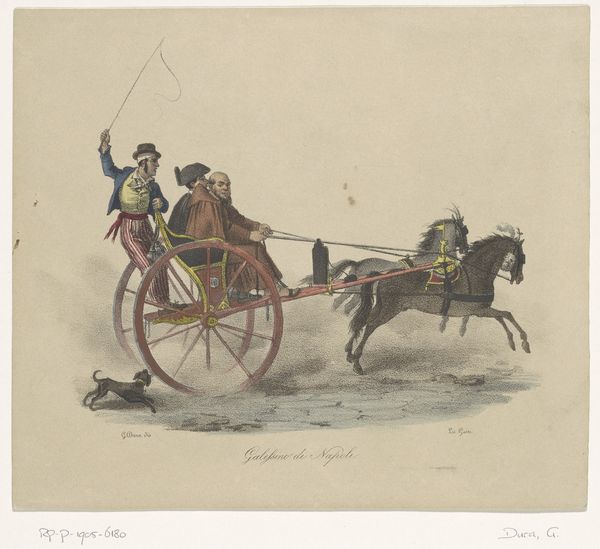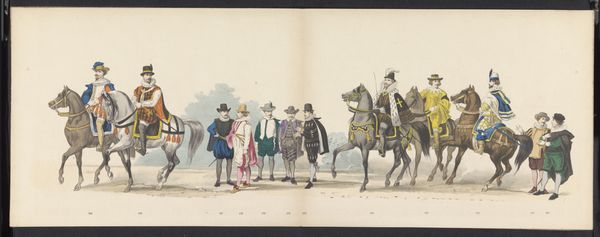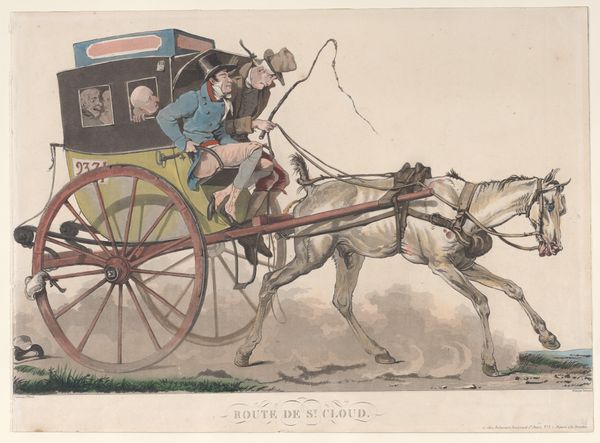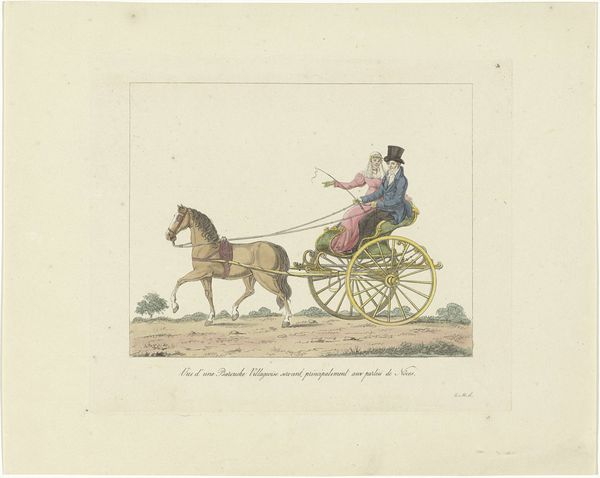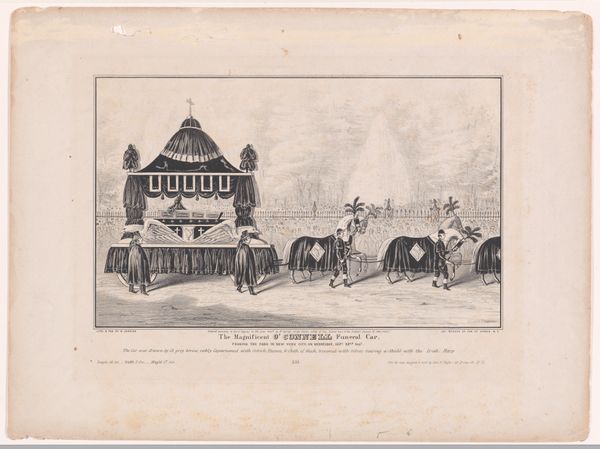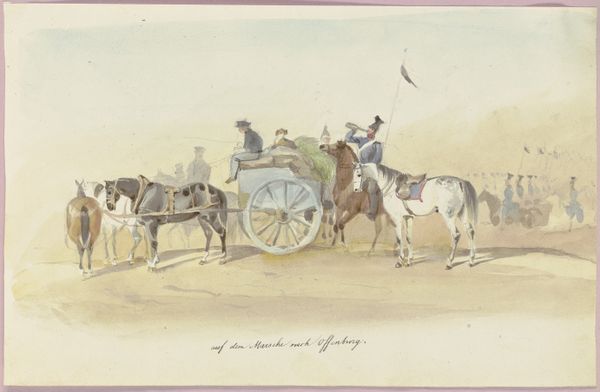
coloured-pencil, lithograph, print
#
coloured-pencil
#
lithograph
# print
#
caricature
#
landscape
#
figuration
#
coloured pencil
#
united-states
#
genre-painting
#
history-painting
Dimensions: 8 1/4 x 13 1/4 in. (20.96 x 33.66 cm) (plate)11 7/8 x 15 5/8 in. (30.16 x 39.69 cm) (sheet)
Copyright: Public Domain
Curator: This lithograph, printed with coloured pencils, is titled "A Poultry Show on the Road". Currier and Ives created it in 1883. Editor: The dynamism here is striking! The way the artist uses line and color—there’s a sense of immediate movement and… perhaps a subtle social critique layered within. Curator: Precisely. Consider the composition—two horse-drawn carriages depicted, each distinctly rendered. The first, with its team of mixed animals pulling a cage full of fowl; the second, carrying what appears to be a wealthier couple, drawn by matching horses. Editor: What jumps out is the racial dynamic—the African American man driving the poultry carriage, in contrast to the white couple in the more refined vehicle. One can't overlook how labour, race, and animal husbandry are all intertwined through the very materiality of the image itself: the inks, paper, and printing process that made it accessible to a wide audience, yet reinforces the very hierarchy it depicts. Curator: Indeed. Semiotically, each element signifies more than its literal representation. The poultry becomes symbolic of the spoils of rural life, the carriages embodiments of different classes. The spatial arrangement emphasizes a certain... disconnect. Editor: And the artist's hand! Think about the division of labour in its creation. A team worked to translate the original art onto stone, preparing it for mass consumption, impacting the print's availability and contributing to a cultural narrative rife with problematic power dynamics of race, labour, and the countryside idyll. The very essence of what this piece is hinged on materials and manpower, shaping what it means beyond just aesthetics. Curator: The seeming simplicity of the image belies the intricate social tapestry it represents. The artist employs techniques rooted in satire, a vehicle for deeper discourse beneath the pleasant scenery. Editor: It reminds us to examine the social and economic machinery not only within the artwork, but also how these types of popular images themselves, are crafted, distributed and consumed as objects. It gives one pause, no? Curator: Most definitely. It’s a potent reminder that within even seemingly lighthearted images, lie the intricate, often troubling, narratives of our past.
Comments
No comments
Be the first to comment and join the conversation on the ultimate creative platform.
